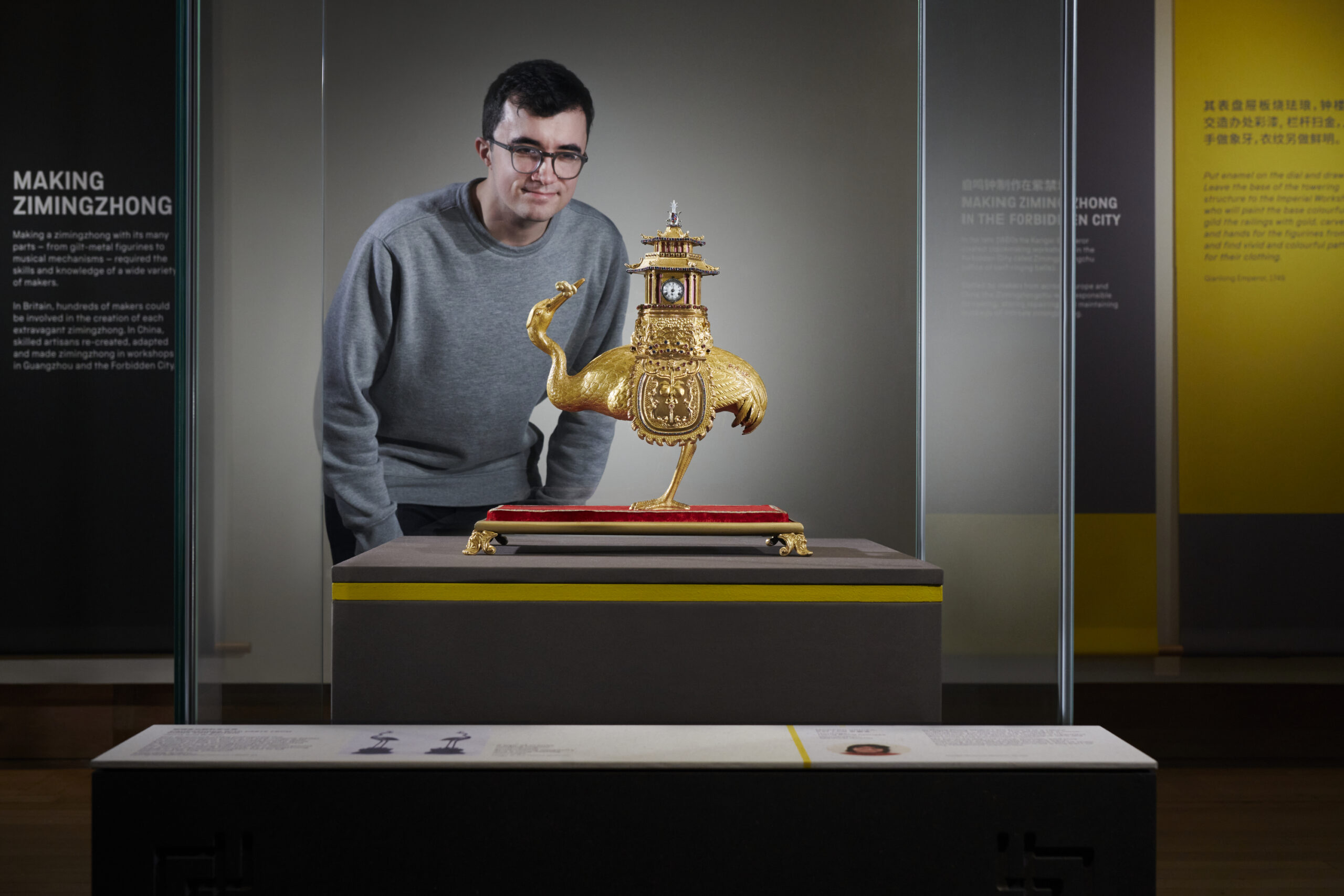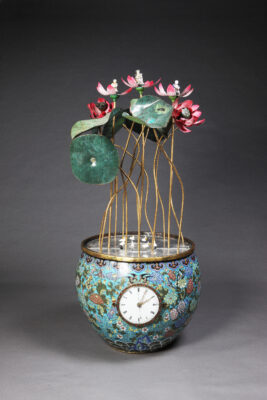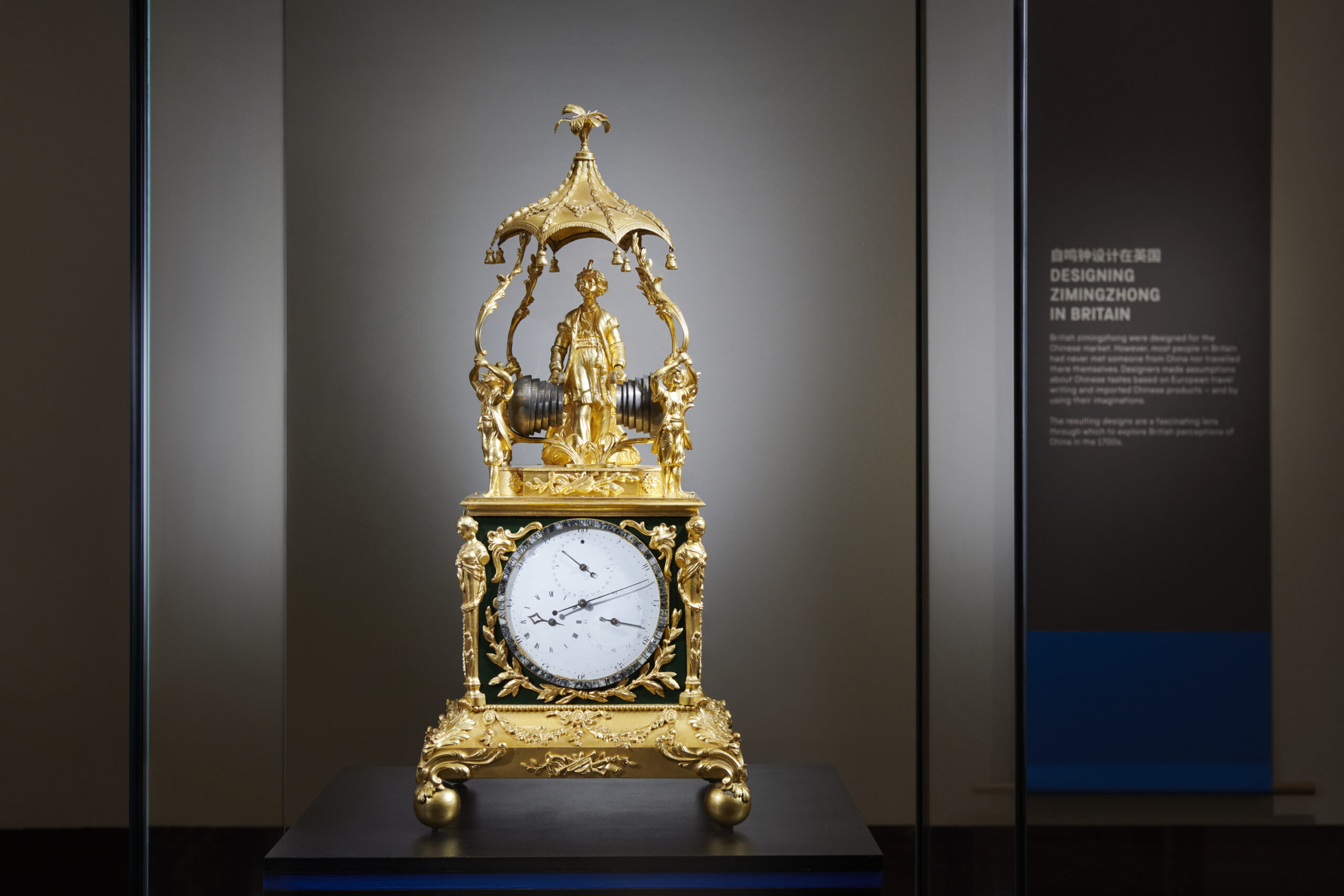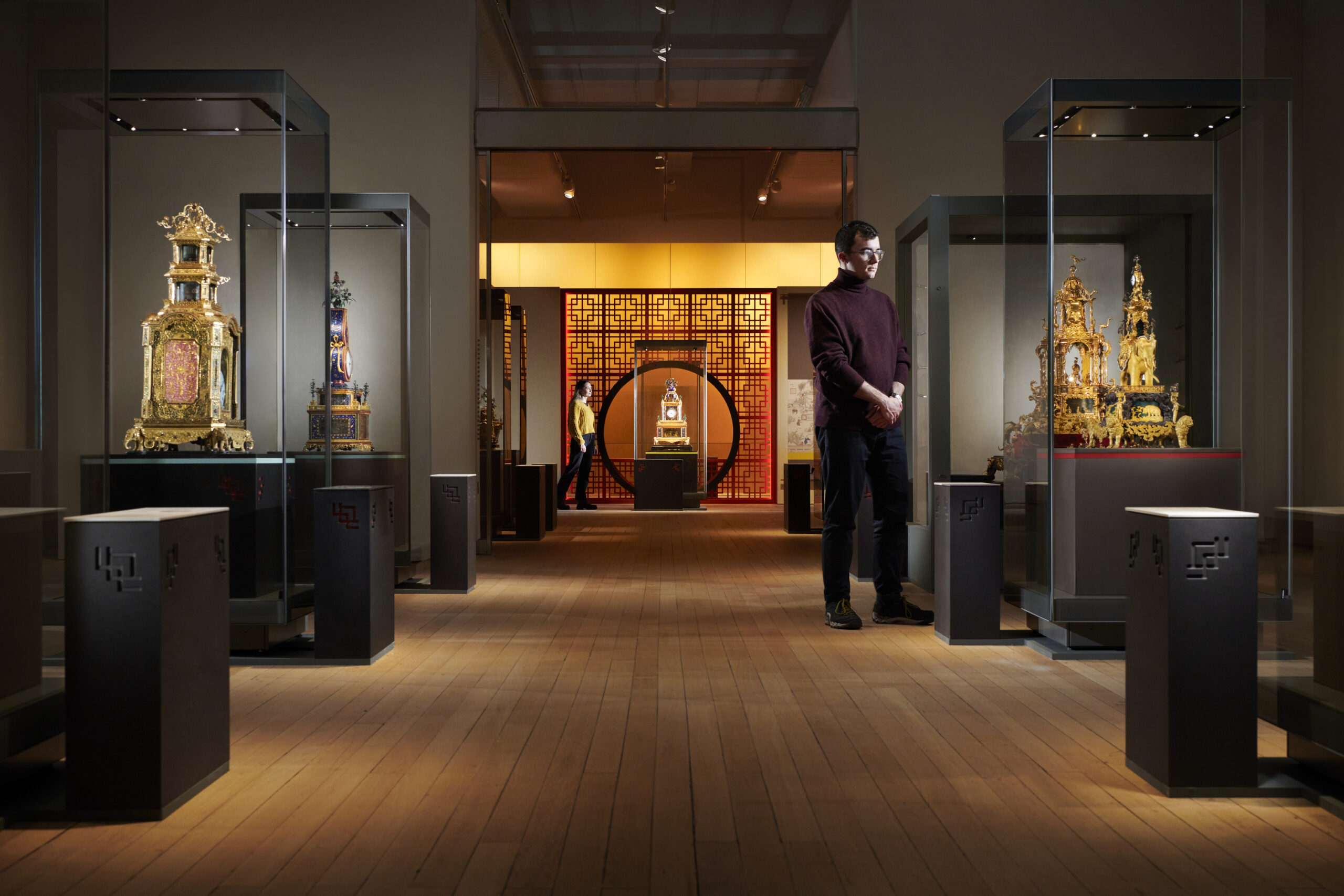Last week, the Science Museum opened a new exhibition featuring 23 resplendent mechanical clocks on loan from The Palace Museum in Beijing and never before displayed together in the UK. The exhibition launch was celebrated with a special themed Chinese New Year Lates, where visitors had the chance to enjoy a spectacular lion and dragon dance performance in partnership with London Chinatown Chinese Association.
The exhibition shines a light on the Chinese emperors’ obsessive collection of these remarkable clockwork instruments, as the origins of the unique trade, and the inner workings of the elaborate treasures that inspired British craftsmen and emperors alike. Translating to ‘bells that ring themselves’, these zimingzhong (roughly pronounced zi-ming-jong), are more than just clocks: they present an enchanting combination of a flamboyant aesthetic, timekeeping, music and sometimes movement.
The Emperors and Zimingzhong section reveals the vital role of zimingzhong in facilitating early cultural exchanges. Visitors can learn how missionaries in the early 1600s, brought some of the first of these marvels to the Forbidden City to ingratiate themselves with the emperor and in Chinese society. Decades later, the Kangxi Emperor (1662-1722) began collecting the automata which he christened ‘zimingzhong’, displaying them as ‘foreign curiosities’ and demonstrating his mastery of time, the heavens and his divine right to rule.

The clocks’ journey from London to the southern Chinese coast is revealed in the Trade section. Visitors can follow the trade route which took up to a year and discover the sought-after goods which British merchants bought when they reached the coast including silk, tea and porcelain.
Whilst the demand for Chinese goods was high, British merchants were keen to develop their own export trade and British-made luxury goods like zimingzhong provided the perfect opportunity to do so. This exchange of goods led to the exchange of skills. In the Mechanics section of the exhibition visitors can marvel at luxurious pieces like the Zimingzhong with mechanical lotus flowers, which was constructed using Chinese and European technology. When wound, a flock of miniature birds swim on a glistening pond as potted lotus flowers open. The sumptuous decorative elements are powered by a mechanism made in China while the musical mechanism was made in Europe.

The Making section of the exhibition explores the artistic skills and techniques needed to create zimingzhong. On display together for the first time are the Temple zimingzhong made by key British maker, James Upjohn, in the 1760s and his memoir which provides rich insight into the work involved in creating its ornate figurines and delicate gold filigree. Four interactive mechanisms that illustrate technologies used to operate the zimingzhong are also on display. Provided by Hong Kong Science Museum, these interactives allow visitors to delve into the complex inner workings of these delicate clocks.
British zimingzhong were designed for the Chinese market by craftsmen who had often never travelled to Asia and reflect British perceptions of Chinese culture in the 1700s. On display in the Design section visitors can see a selection of zimingzhong that embody this attempt at a visual understanding of Chinese tastes, including the Zimingzhong with Turbaned Figure. This piece mixes imagery associated with China, Japan and India to present a generalised European view of an imagined East, reflecting the ‘chinoiserie’ style that was popular in Britain at the time. It highlights British people’s interest in China but also their lack of cultural understanding.

Although beautiful to behold, zimingzhong weren’t purely decorative. As timekeepers, they had a variety of uses, including organising the Imperial household and improving the timing of celestial events such as eclipses. The ability to predict changes in the night sky with greater accuracy helped reinforce the belief present in Chinese cosmology that the emperor represented the connection between heaven and Earth.
Part of the appeal of zimingzhong was also the sophisticated music technology they showcased; they often played a selection of popular European or Chinese songs. Skilled programmers would convert written musical scores into mechanisms. Throughout the exhibition, an accompanying soundscape of the clocks’ melodies is heard, including an extract from the Molihua or Jasmine Flower, a popular Chinese folk song.

To explore the cultural legacy of zimingzhong, the Science Museum has collaborated with China Exchange to gather stories and memories from people of Chinese heritage living in London. These are on display throughout the exhibition and provide a range of rich, personal perspectives on the significance and meaning of zimingzhong.
On entering the final section, visitors can uncover why the zimingzhong trade began to decline. In 1796, Emperor Jiaqing ascended the throne; he believed zimingzhong to be a frivolous waste of money and the trade faded. But zimingzhong continued to be used by China’s elite class and highlighted the growing global links being forged by trade.
Zimingzhong 凝时聚珍: Clockwork Treasures from China’s Forbidden City is now open at the Science Museum until Sunday 2 June 2024. You can book a ticket here, and are invited to pay what you can (with a minimum ticket cost of £1.00 per person).
The exhibition is generously supported by The Huo Family Foundation (Associate Funder) and opens at the Science Museum with thanks to the Lee Kai Hung Foundation.
The post ZIMINGZHONG 凝时聚珍: CLOCKWORK TREASURES FROM CHINA’S FORBIDDEN CITY NOW OPEN appeared first on Science Museum Blog.
